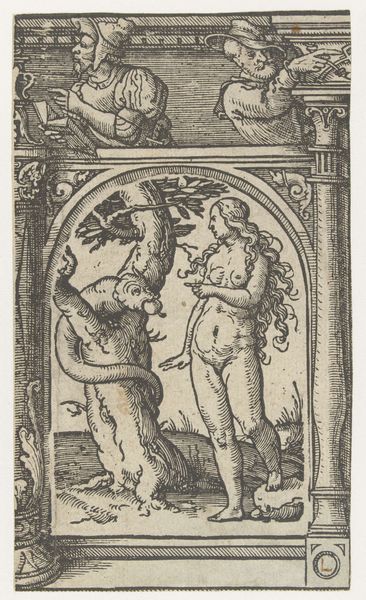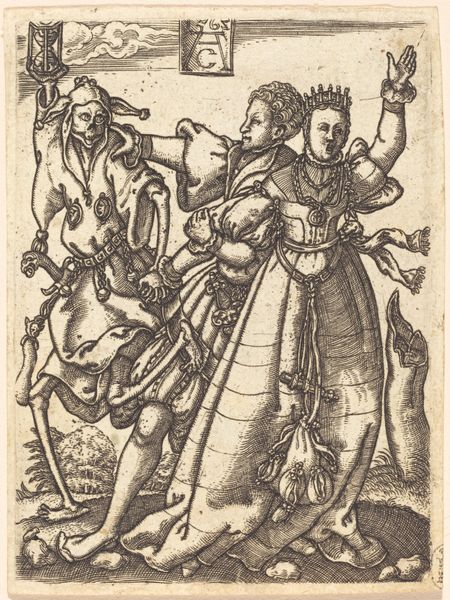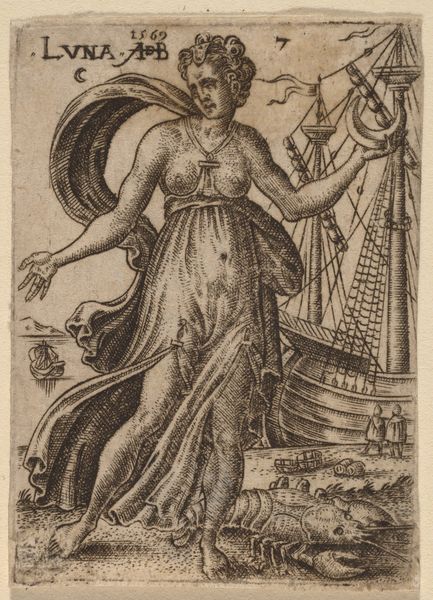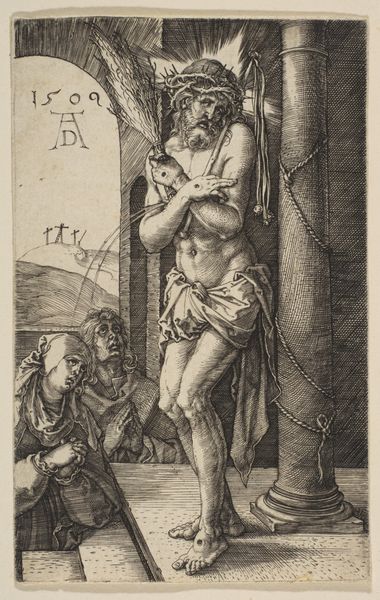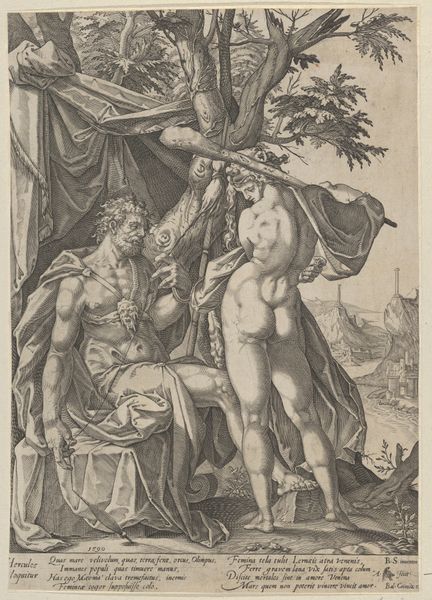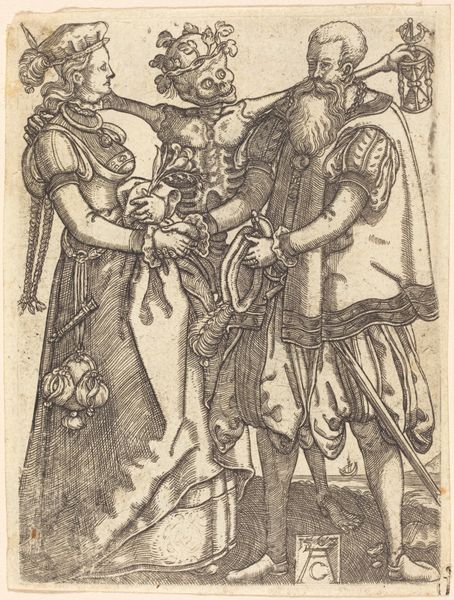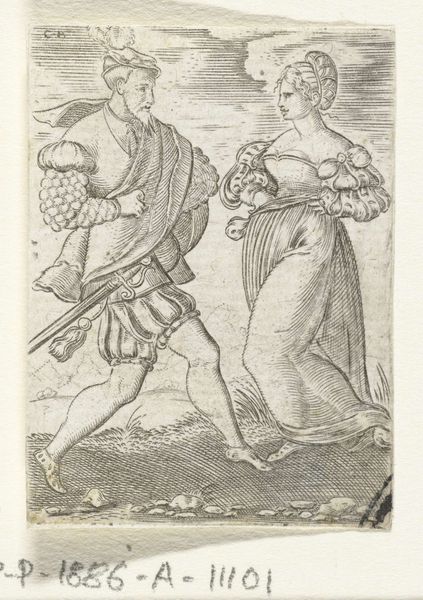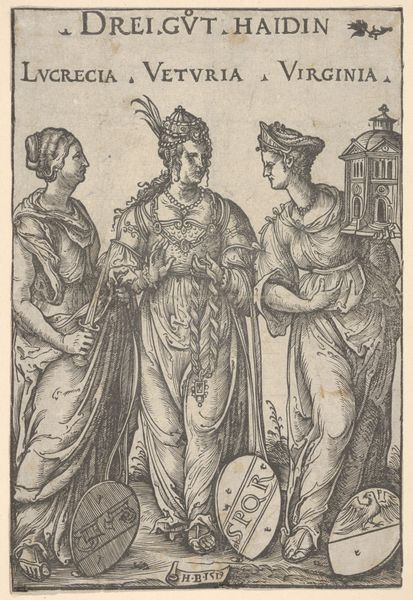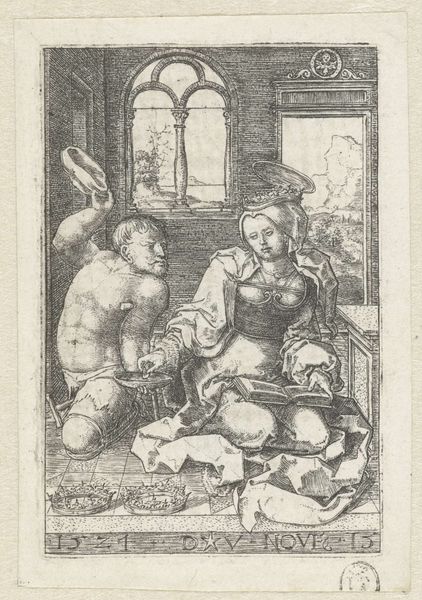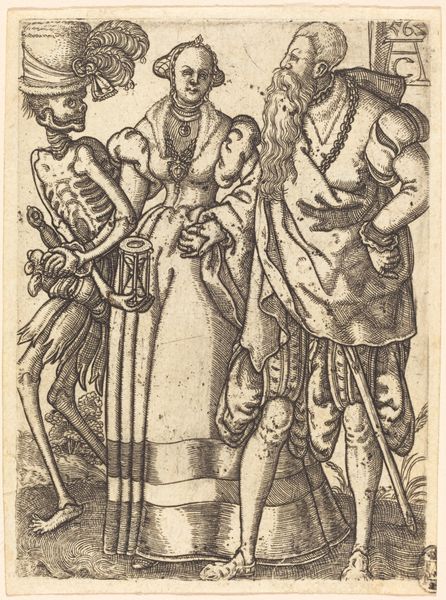
drawing, print, engraving
#
drawing
#
pen drawing
# print
#
figuration
#
11_renaissance
#
history-painting
#
armor
#
engraving
Dimensions: Sheet: 5 1/16 × 3 1/8 in. (12.8 × 8 cm)
Copyright: Public Domain
Curator: Before us is "The Knight and the Lady," an engraving by Master ES, likely created between 1445 and 1467. It's a fantastic example of early printmaking, currently housed here at the Metropolitan Museum of Art. Editor: My first impression is one of stark formality softened by a tender melancholy. The contrast between the rigid armor and the woman's gentle pose is striking. Curator: Absolutely. Considering the production, we should note the technical skill involved. Engraving at this time was incredibly labor-intensive. Each line had to be meticulously carved into a metal plate. This was hardly a democratic process; the tools, materials, and skilled labor were expensive. Editor: Yes, the politics of imagery were complex, weren't they? It makes you wonder about the intended audience and what this piece represented to them. This imagery connects with broader social and cultural norms, probably meant for the wealthy class. The attire suggests a narrative steeped in the values of chivalry and courtly love. Curator: The clothing gives a rich sense of period. The heavy plate armor of the knight with complex lines would require dedicated guilds and armorers, indicating specialized trades and distribution networks which are material evidence of burgeoning medieval commerce and courtly culture. Editor: I am wondering if this speaks to ideas around duty, sacrifice, and ideal relationships. Museums like the Met have really influenced our understanding. This engraving becomes part of the accepted story of this era and culture. But I am left wanting more: I would like to hear about who chose to memorialize that vision. What was omitted? Whose version is being amplified here? Curator: You’re spot on, it presents the world for that time and by someone during that time, revealing hierarchies, skills, labor division, consumption. As this engraving was printed repeatedly it influenced other engravers. It served a blueprint for visualizing courtly love in a commodified form that impacted societal and artisanal behaviors. Editor: Seeing how these materials and these forms speak volumes to me today— I now have questions beyond aesthetics, I would like to look at reception studies to examine audiences past and present and their diverse interpretations, making us richer when analyzing images as active participants. Curator: Definitely, by discussing production methods and then contrasting it to broader artistic and societal trends we both arrived at interesting aspects which go well beyond the sum of all lines and materials.
Comments
No comments
Be the first to comment and join the conversation on the ultimate creative platform.
